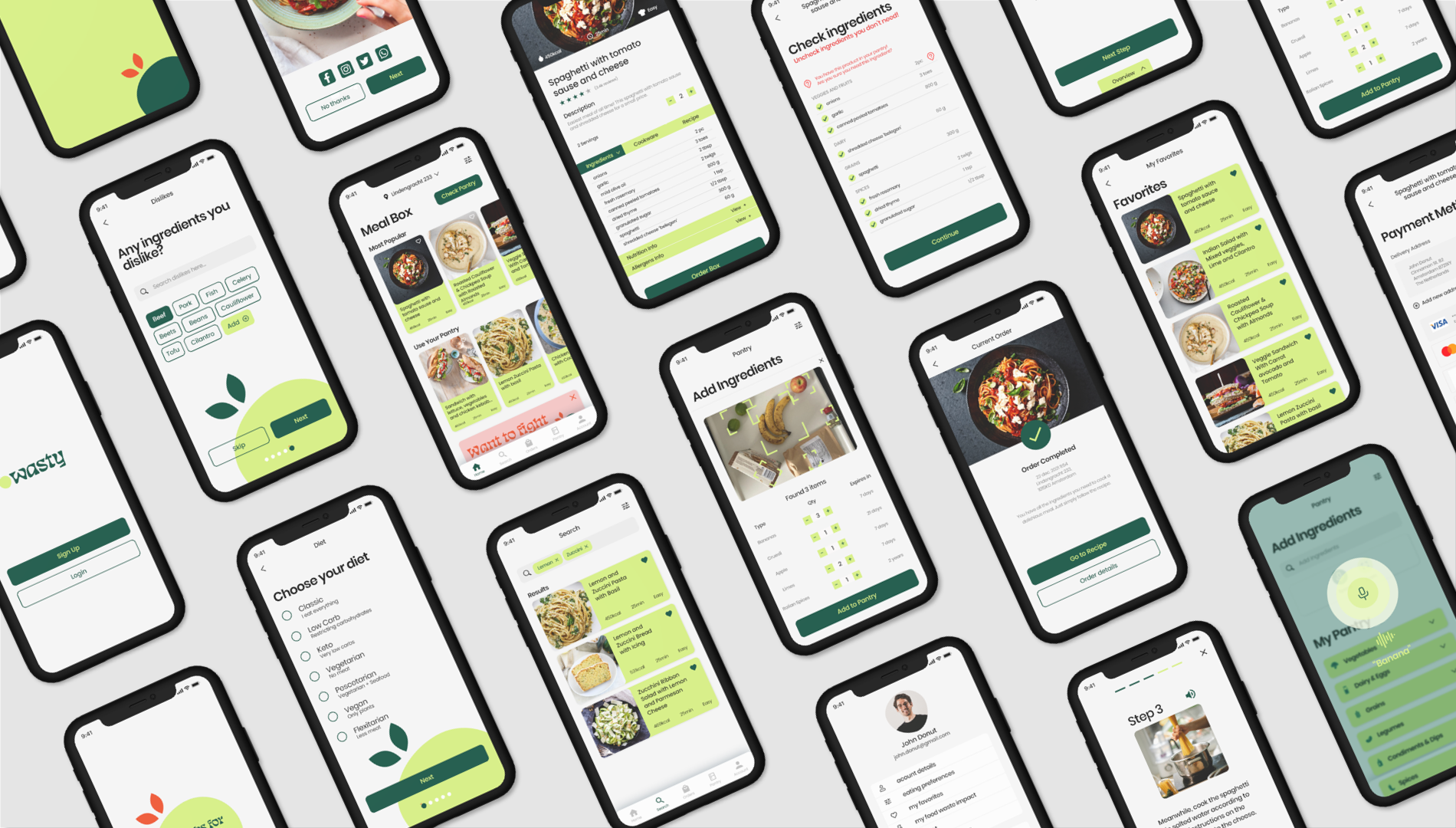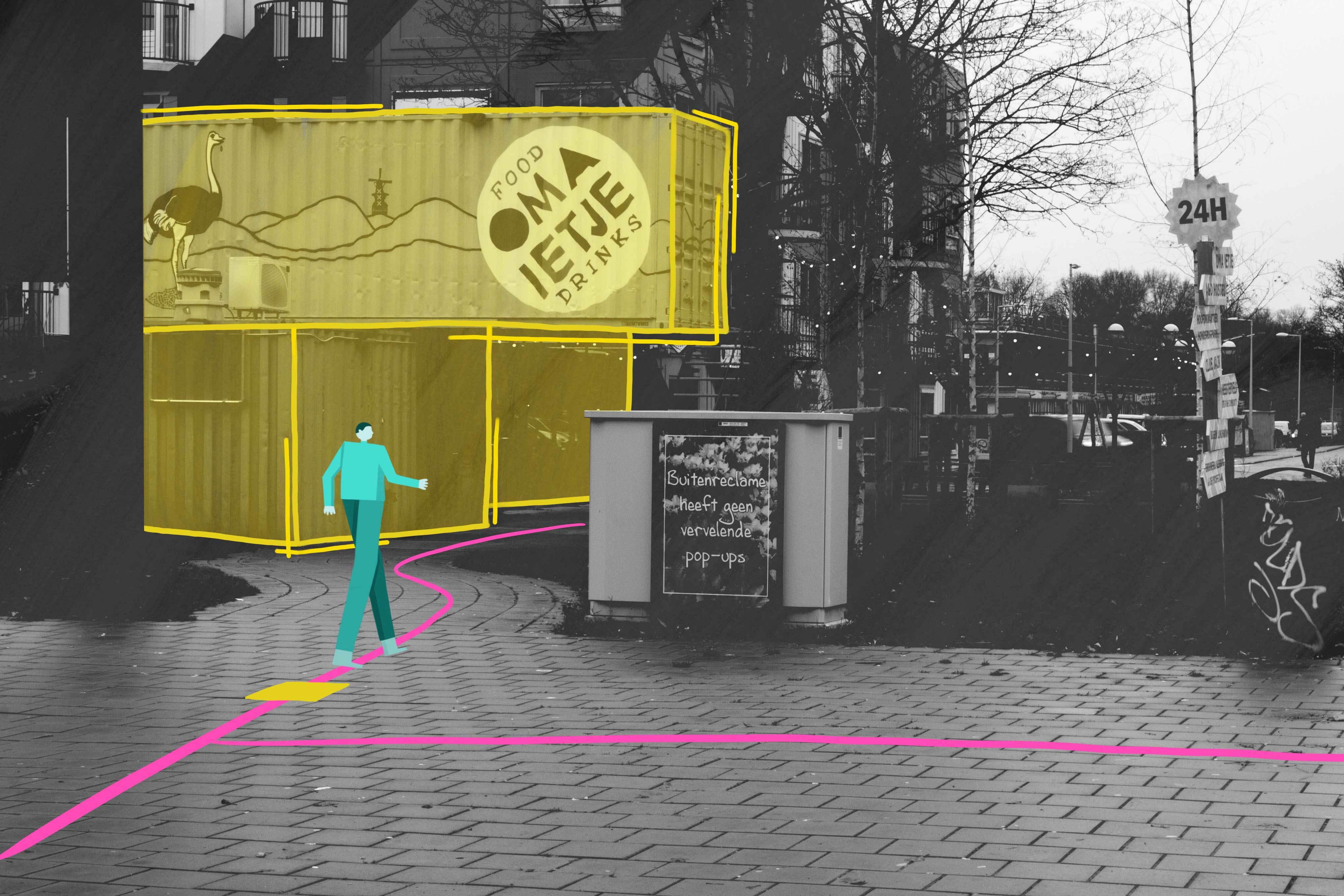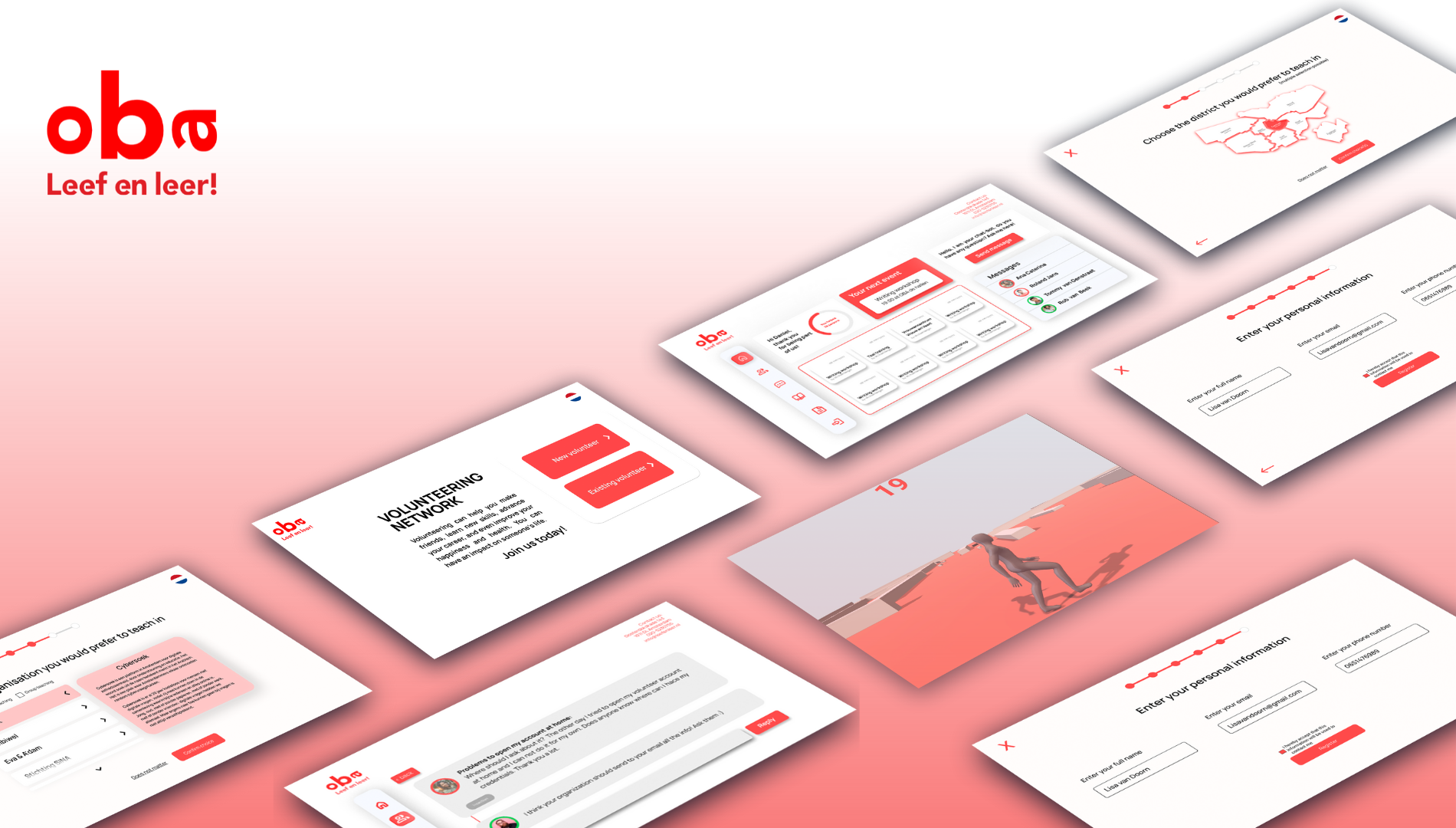
WASTY
Application preventing food from going to waste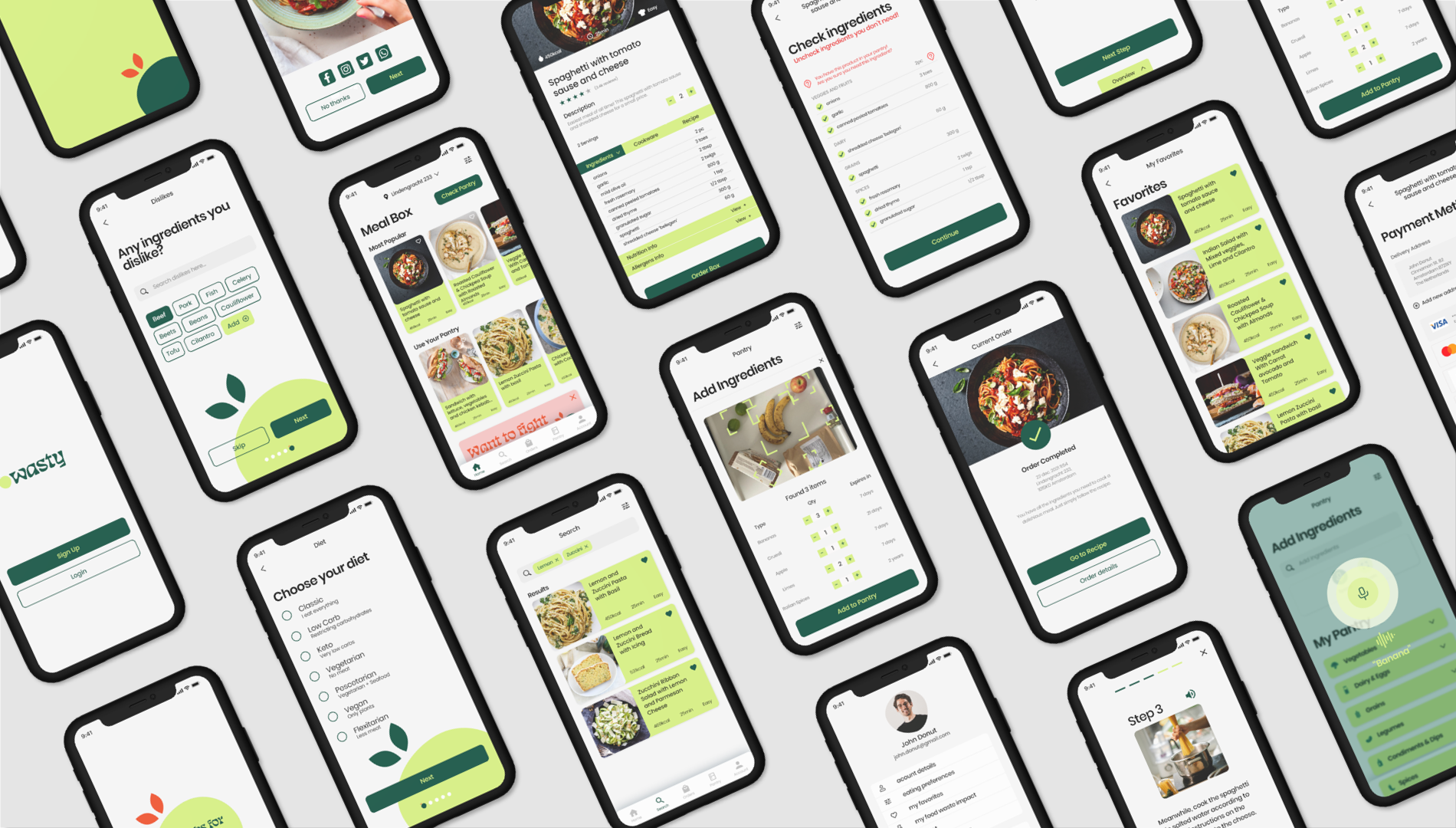
-
Client:
Critical Media Lab
- Team:
-
Disciplines:
UX/UI, Visual Design, Product Design
-
Schoolyear:
2021-2022
Roughly one-third of all food produced around the world is thrown away. That is about 1.3 billion tonnes of household food waste ending up in landfills or combustion sites annually. The majority of people are unaware of how much food they waste on a daily basis, from uneaten leftovers to rotten vegetables to food that could have been easily eaten or reused. Preventing food waste is one of the simplest and most effective ways to save money while also reducing greenhouse gas emissions and conserving natural resources and so lowering your climate change footprint. However, people need help to realize that.
Our challenge was to design a recipe generator that connects food waste with end-users' personal preferences and inventory. How can we alleviate food waste by rescuing food and giving it a purpose? What can we do to prevent people from throwing away their food?
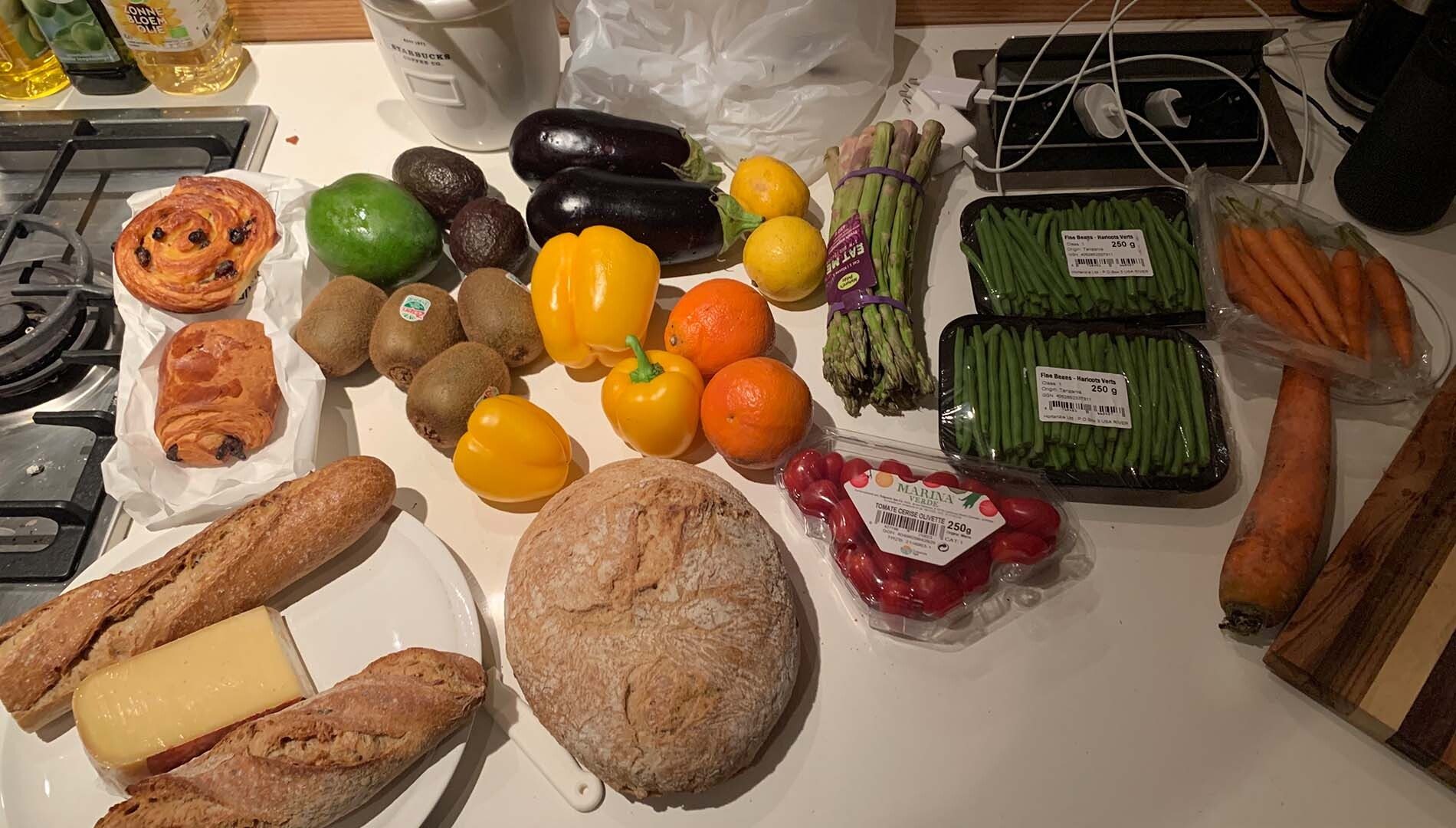
Simmering down food waste behaviours
The design process included conducting research in the space of food waste through interviews, benchmarking, field and desk research.
An important finding of our research was that the biggest contributors to food waste were households. Almost half of the food wasted in Europe occurs at the consumption phase of the food supply chain. We interviewed several households to get a better grasp on the problem and explore potential solutions.
First person explorations through multiple cooking sessions with rescued food helped us to understand the most wasted foods and create recipes based on that. Discussions with the staff at restaurants, cafes, hotels and community diners helped us to find out the process of rescuing food about to go to waste.
The next part included ideation & prototyping upon gathering the important research insights. One of these was that households cause wasteful behaviour due to their food planning, storing, cooking and consumption. A lack of awareness of food availability, forgetfulness and not cooking the right meal proportions further leads to food being thrown away.
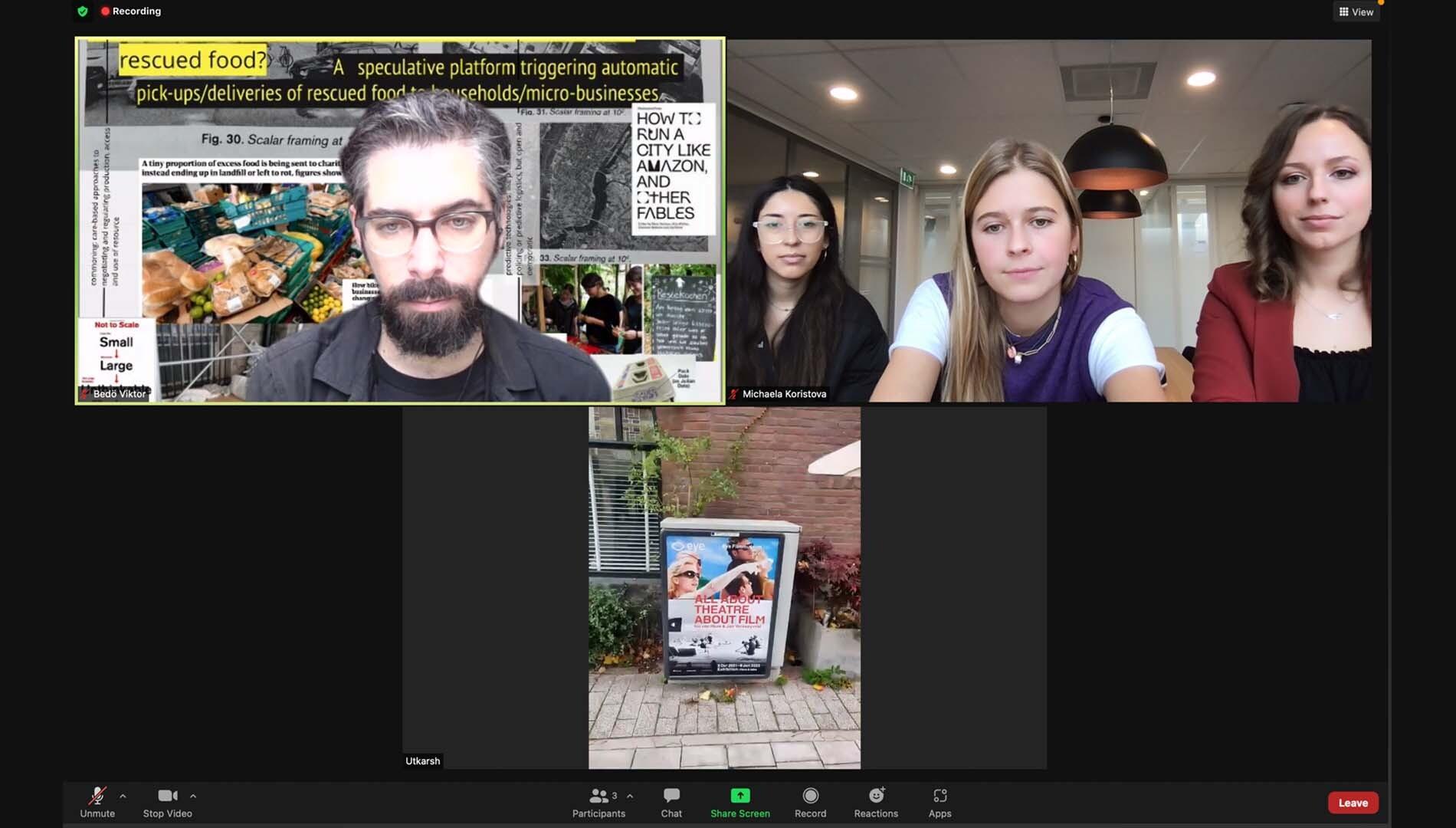
Challenge
Our project was designed for a situation where an infrastructure for pick-up and delivery of food waste already existed, which is non-existing yet. Connecting a speculative project with our own world and its research was hard because it sometimes does not align. However, it also challenged us to bridge our imagination with possibilities for the near future.

Recipes designed just for you
One of the major challenges for the project was to deliver customized recipes to users. We made sure this was taken care of during the onboarding process itself. By creating filters for users’ eating habits, dietary preferences, allergies, household size, and cookware, the right food items were delivered to the users. For example, in a vegetarian household with a lactose intolerant member, the food items delivered would exclude meat & milk products.
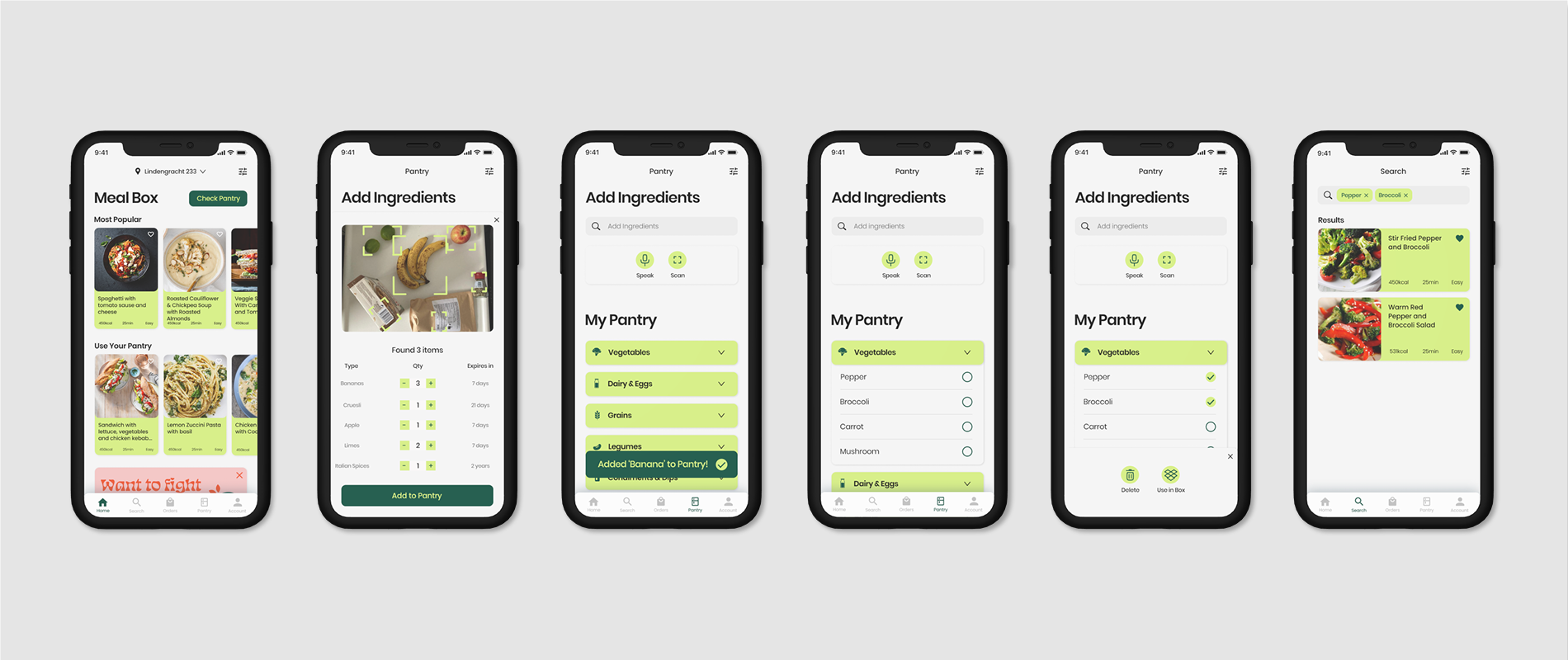
My pantry: reducing further food waste
To curb households’ food waste even more, we introduced the “My Pantry” section in the app. Through object recognition technology, users can easily scan the food items bought from the supermarkets and it automatically adds to the My Pantry section. This gives them more control over the food items in their pantry and fridge and lets them know which food items are available. This way, no matter where they are, they can check their inventory on their phone.
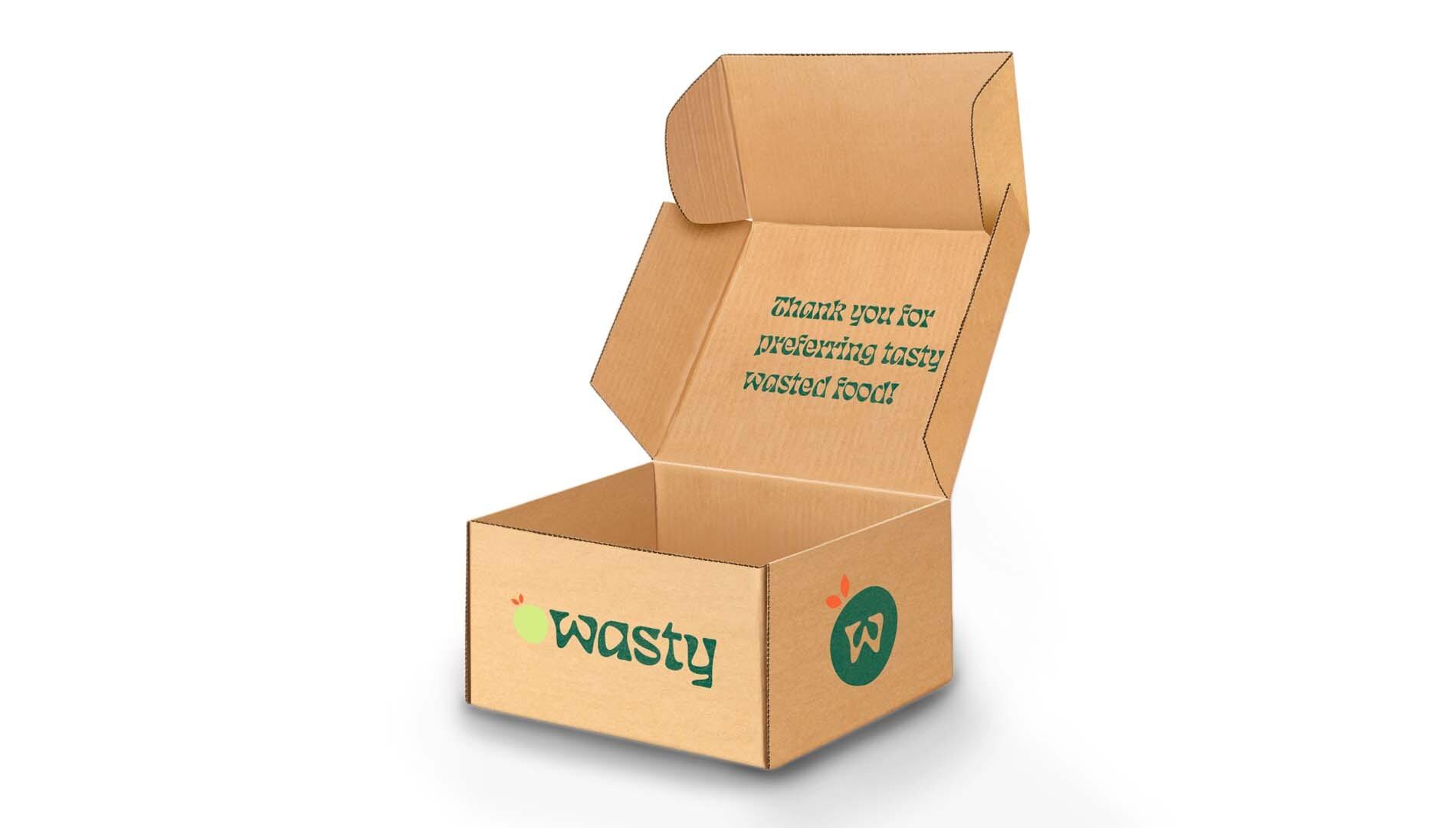
Look ahead
While we tried to strengthen the research of our client by providing them with a tool that could inspire the process of reducing households’ food waste, we tried to go further than that. We hope this project raises people’s awareness of the food waste issue and people’s awareness of their own fridge. Because without the knowledge of the problem and without the knowledge of their own food inventory, it will be difficult preventing people from throwing delicious food away.
